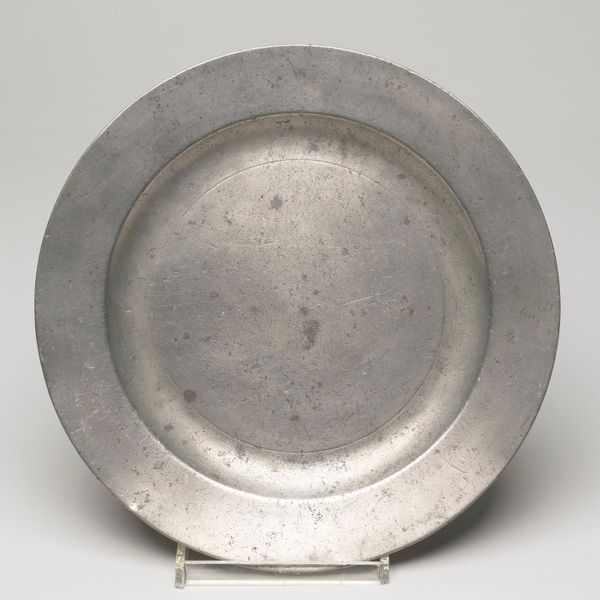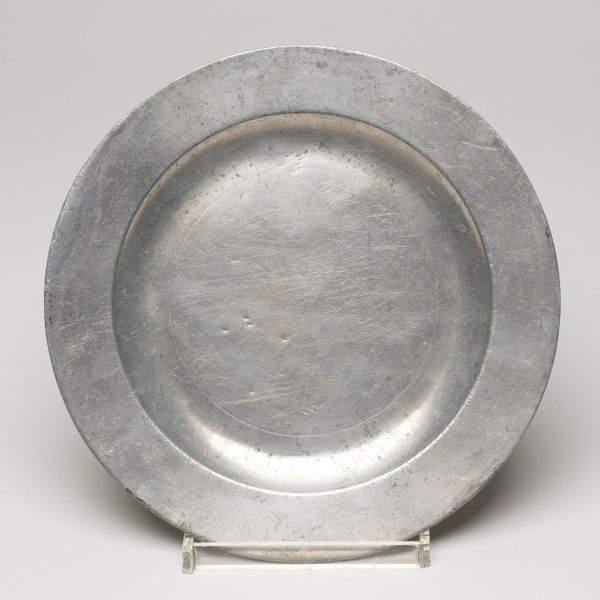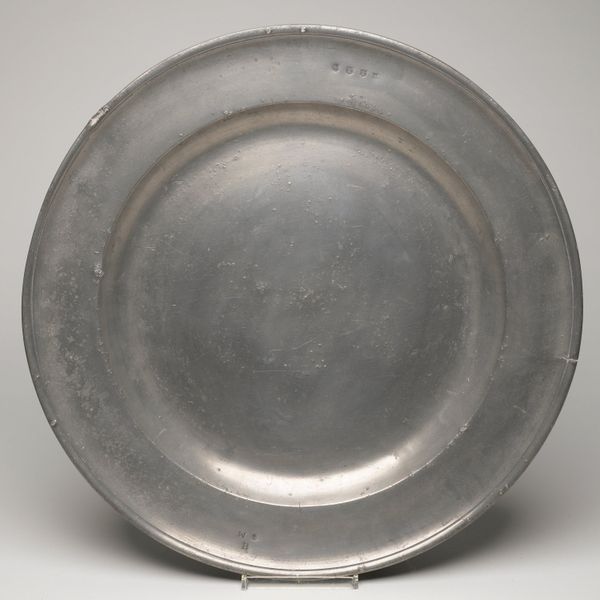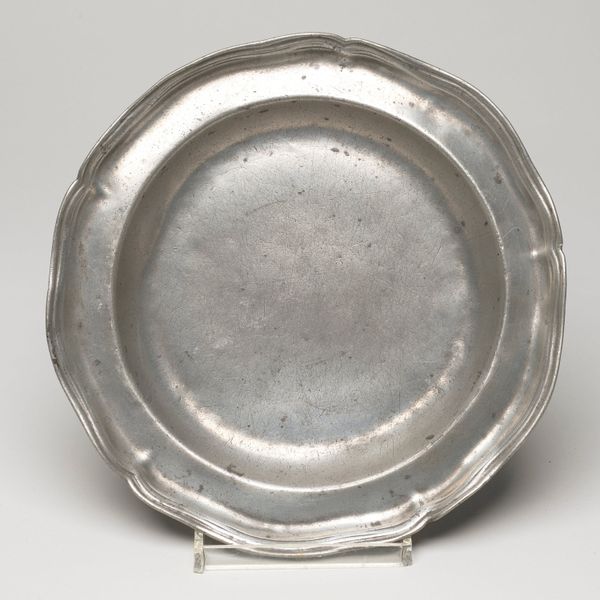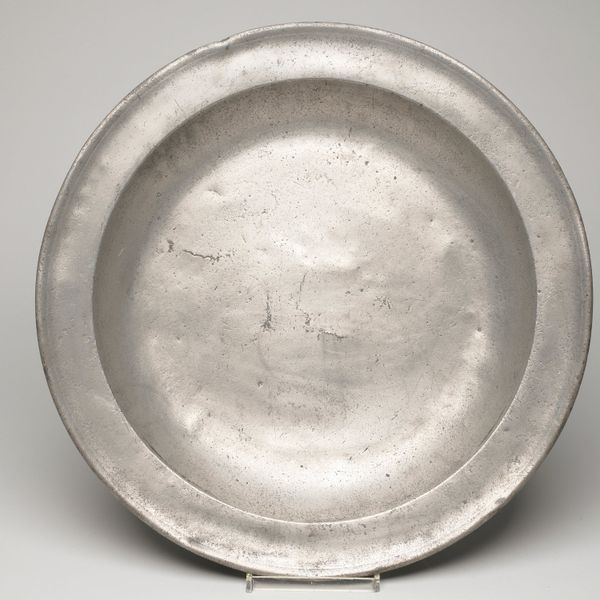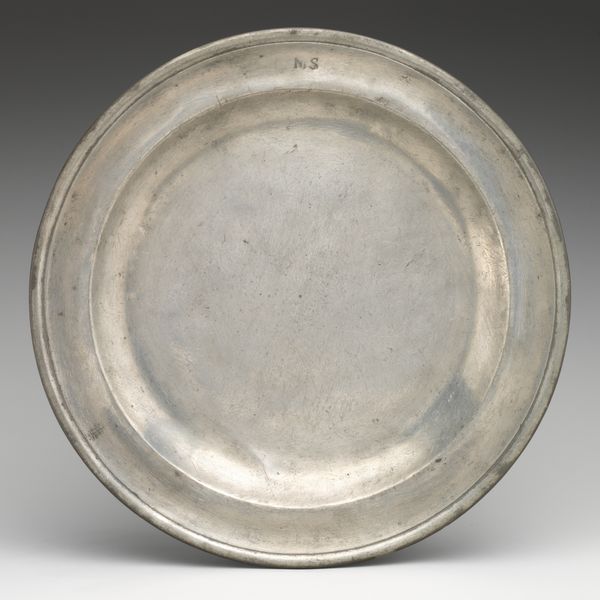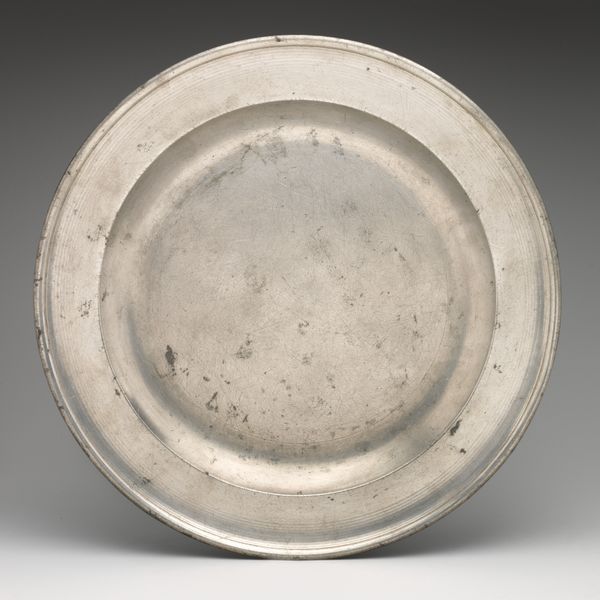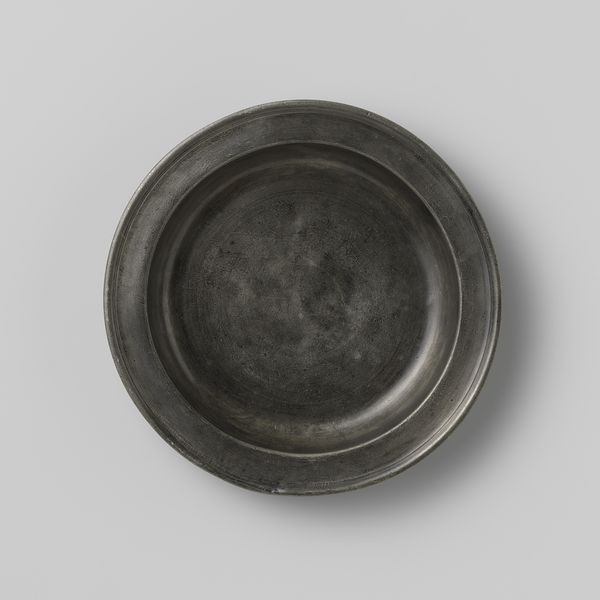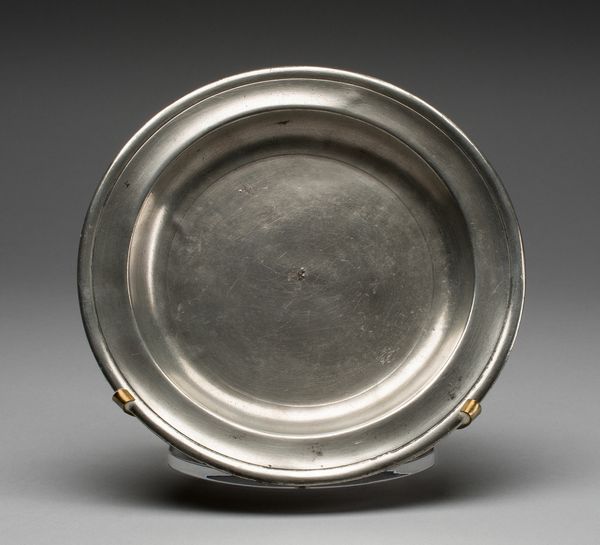
ceramic
#
ceramic
#
stoneware
#
england
#
ceramic
Dimensions: 5/8 x 9 3/8 x 9 3/8 in. (1.6 x 23.81 x 23.81 cm)
Copyright: Public Domain
This plate was made anonymously, using pewter. It would have been common for people of middling status to eat off pewter in Europe from the 17th through the 19th centuries. But the anonymity of the maker is telling. This was a functional object, not necessarily a piece of art. The question then becomes, why is this plate in an art museum? As an historian, I'd want to know more about where it was found, and how it came to be in the museum's collection. Was it part of a larger find? Did it belong to someone famous? Was it chosen to be displayed because it is typical of its time? The answers to these questions tell us more about the history of taste and collecting than about the plate itself. Ultimately, what survives in museum collections like this one says less about the past itself and more about what later generations found interesting or valuable, and the institutions that gave those objects value.
Comments
No comments
Be the first to comment and join the conversation on the ultimate creative platform.
